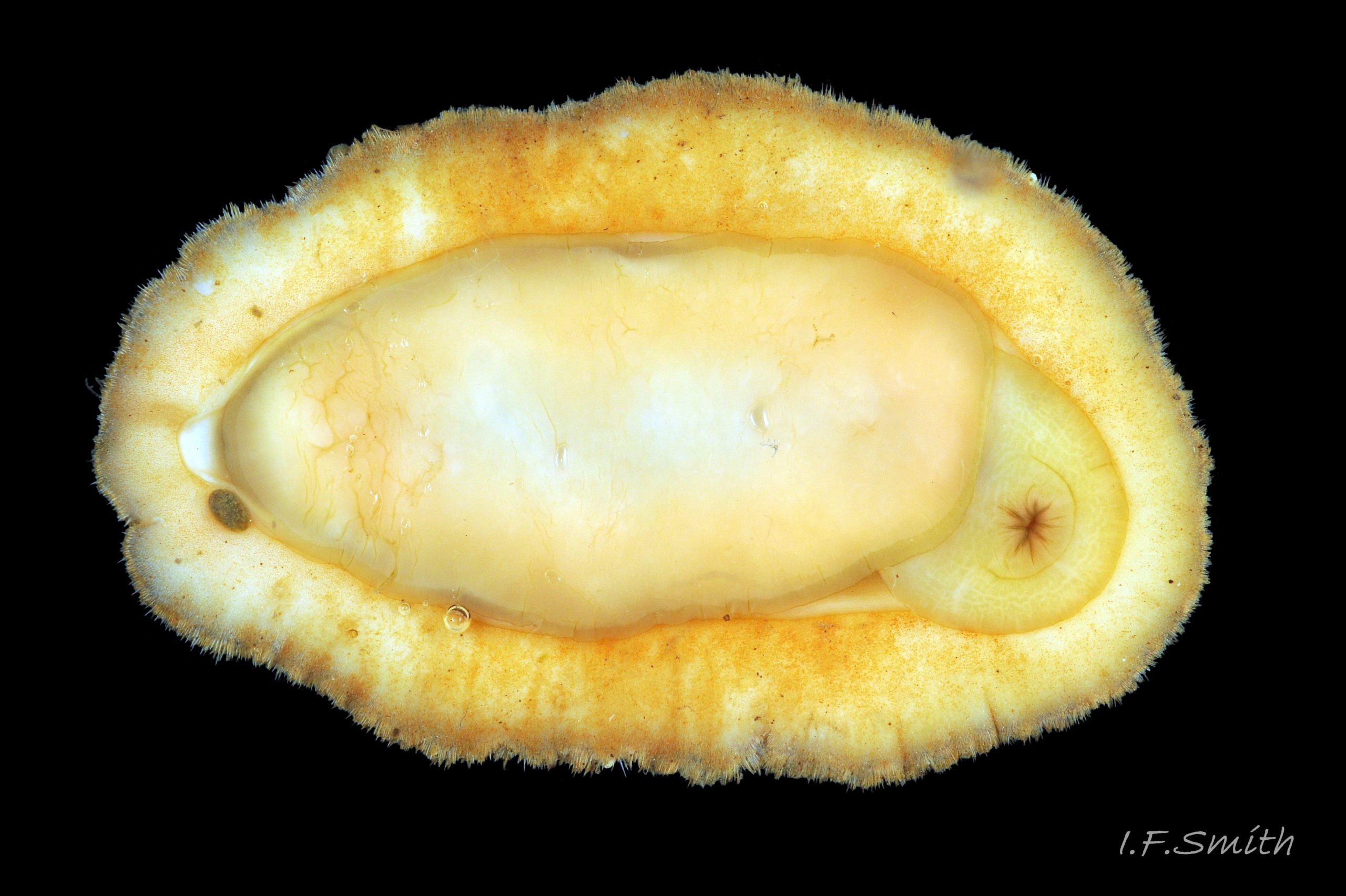Length 34 mm. Attached to and photographed through glass. Dorset, England. April 2017.
The hyponotum (ventral surface of the girdle) is covered by a tough cuticle, but the scale-like spicules coating it are smaller than the spicules on the perinotum . It is often stained brownish from detritus or mineral deposits.
Large spicules protrude as a fringe from the girdle rim, but their appearance varies with the amount of detritus and wear experienced; they look short on this specimen as they are clogged with detritus.
The head and foot never protrude into view naturally on a live animal attached to the substrate, and can only be seen if the animal is detached, or attached to glass.
The foot is an elongate ellipse with no medial dividing line. The sole in this image is yellowish white but it can be salmon pink, or various shades of yellow or buff.
The large muscular foot and flat hyponotum (ventral surface of the girdle) grip the surface firmly. It travels by monotaxic, retrograde compression waves of the sole. When alarmed, it can increase its grip suctorially by raising part of the hyponotum to form a partial vacuum.
Faeces are compacted in the long intestine into pellets that are carried from the anus by the exhalent water current of the pallial cavity to be expelled at the posterior from under the slightly raised girdle. In this image, a faecal pellet is trapped under the hypnotum near the exit route.
KEY ID FEATURES : 01 Acanthochitona fascicularis

